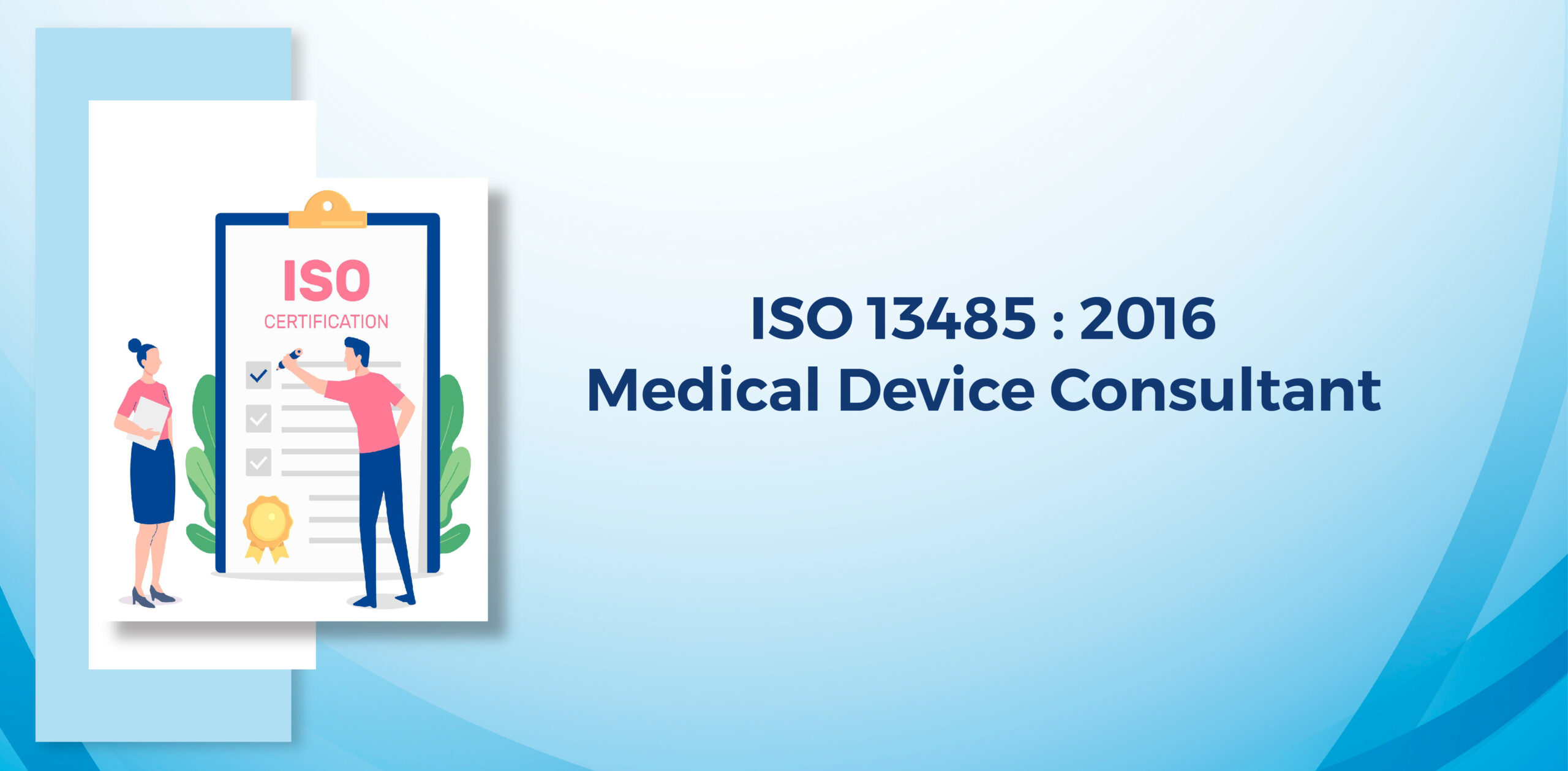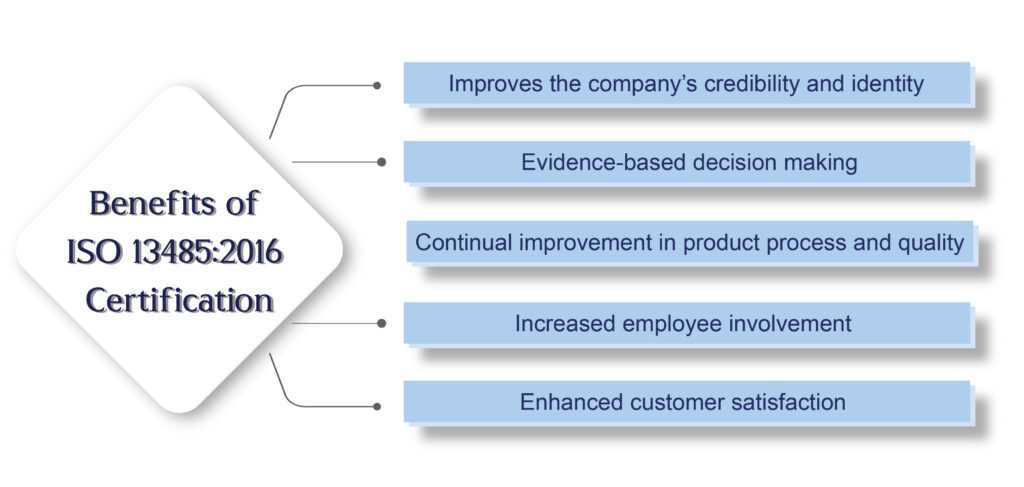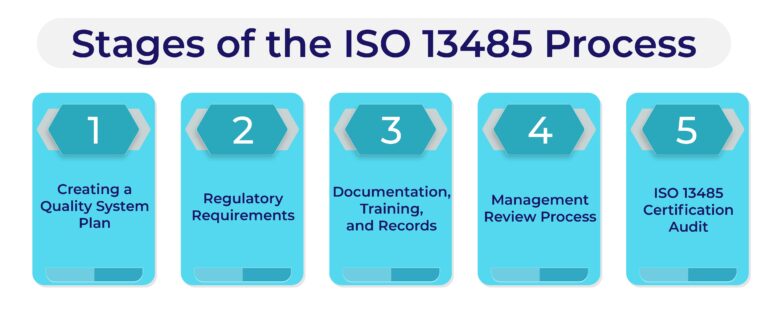ISO 13485 Certification - QMS Consultant For Medical Device
What is ISO 13485 Certification?
ISO 13485 is a certification that sets forth the standard of medical devices. Safety and quality assurance is important, especially in the case of medical equipment. To that end, prove that your medical devices fall to the right standards with ISO 13485 certification.
The international standard EN ISO 13485 forms the basis for the certification of quality management systems in companies that manufacture, distribute, and are involved in any life cycle activities of medical devices.
When it comes to medical devices, two things are necessary:
- The quality of the medical device
- The safety when you are using such devices
Therefore, the regulatory standards for such devices are especially stringent and must be followed through the entire life cycle of the medical device. This is not a matter of the eight qualities; many organizations must demonstrate that they can manage their medical equipment’s quality. This demonstration comes in the form of ISO 13485:2016 certifications.
ISO 13485 sets the standards regarding the quality management system associated with the medical devices industry. If you want this Certification and ISO 13485 guidelines you should get in touch with Operon Strategist, and you can begin applying for the Certification.
Looking for ISO 13485 Certification in India?
Fill the Form or Mail Us to: enquiry@operonstrategist.com
Quality Management Systems for Medical Devices and In Vitro Diagnostics
A robust quality management system is fundamental to the operations of a medical device manufacturer, serving as the framework for all activities and tasks. It guarantees that both internal protocols and external regulations are diligently acknowledged and followed.
Obtaining suitable certification allows a manufacturer to instill trust in its procedures and products, showcasing a steadfast dedication to safety and excellence.
What Is the Difference Between ISO 13485 and EN ISO 13485?
ISO 13485 is the internationally recognized basic version of the standard, it has been harmonized/recognized for its consideration in the implementation of the regional regulatory approval procedures like EN ISO 13485, ANSI ISO 13485, and IS/ISO 13485 for India.
By complying with a harmonized standard, a manufacturer can prove that its products or services comply with the technical requirements of the regional legislation.
Also, read the difference between 21 CFR 820 and ISO 13485:2016
Learn more about How to Use ISO 13485 Standard For CE Marking Approval of Medical Devices?
Non-applicability for Product Standardization
ISO 13485 is not applicable for product standardization, as it does not define product quality. ISO is a process-based standard. The applicant can use it to control his or her processes so that the end product meets the desired results.
ISO 13485 is a Non-personal Standard
ISO is a non-personal standard. An individual cannot get certified to ISO 13485 standards. Only an organization or a company can become ISO-certified. However, there is a provision for an individual to gain the ISO 13485 certification. He can obtain an ISO 13485 Certification as a Lead Auditor after a 5-day training course. With such a certificate, he or she can audit other companies.
To become ISO certified, your organization must conduct the following operations:
- Implement an ISO 13485 standard’s QMS
- Further, the Certification Body or a Registrar audits the performance of the organization as per the latest version of ISO 13485.
- If the applicant passes the audit, the Registrar issues the ISO 13485 Certificate. This certificate demonstrates the organization has been registered to ISO 13485 for the next three financial years.
- The ISO-certified organization must re-certify every three years to maintain the ISO certification.
Eligibility Criteria for ISO 13485 Certification in India
Before applying for ISO 13485 Certification, you must adhere to the points specified in ISO 13485 standards. For that purpose, you need to train your organization as per this standard.
ISO 13485 Certification Requirements
- Identify and adopt a risk management approach to product development and product realization.
- Creation of QMS Manual, Processes, Procedures, Formats/Records.
- Creation of Medical Device Master File.
- Analysis of the validation of processes and procedures.
What Are the Stages of the ISO 13485 Process?
Following is the process to get an ISO 13485 Certificate:
- Creating a Quality System Plan: Planning is the initial stage in every quality system. When discussing how to develop a quality system, the Plan-Do-Check-Act (PDCA) Cycle or the Deming Cycle are frequently used as examples. To deploy modifications to your QMS, you must document the quality plans.
- Regulatory Requirements: After choosing your target market for your medical devices, make sure your compliance with other medical device regulations is established. For instance, if you’re creating your quality plan for US medical device firms, you must adhere to 21 CFR part 820.
- Documentation, Training, and Records: Your quality system’s process interaction should be defined in your quality manual. The records will provide light on what quality control is testing.
- Management Review Process:
- Conducting Your First Management Review: Doing your management review only after you have finished your full quality system audit and started some corrective actions is advised to ensure that you have inputs for each of the 12 requirements in the ISO 13485:2016 standard.
- Conducting Your First Internal Audit: The goal of the internal audit is to confirm that the quality system is working as intended and to detect nonconformities before the auditor for the accrediting authority does. The process approach to auditing should be used for internal audits, and the auditor should use a risk-based approach.
- You will receive an internal audit report from the auditor following your internal audit. Also, you should anticipate the internal auditor’s conclusions and the identification of opportunities for improvement (OFI).
- ISO 13485 Certification Audit:
- To confirm that the quality system has been implemented, the certification authority is required to conduct interviews with process owners and review samples of records. The auditors for the certification body will normally confirm that your business has carried out a comprehensive quality system audit and at least one management review.
- The Stage 2 ISO 13485 certification audit’s audit objectives particularly call for assessing your quality system’s performance in the following areas:
- Relevant legal requirements
- Technologies relating to products and processes
- Tech support materials
ISO 13485 and MDSAP
MDSAP (Medical Device Single Audit Program) and ISO 13485 are closely related and significant standards in the medical device industry. MDSAP and ISO 13485 are crucial in the medical device industry, with MDSAP serving as a harmonized audit program and ISO 13485 providing a robust quality management system framework. Together, they contribute to regulatory compliance, quality assurance, and market success for medical device manufacturers operating in multiple countries.
Need More Clarity on the Process of ISO 13485 Certification?
EN ISO 13485 Requirements as per EU MDR
The European Union Medical Device Regulation (EU MDR) emphasizes compliance with stringent quality standards for medical devices. While EN ISO 13485 is a requirement under EU MDR, it plays a crucial role in demonstrating conformity with quality management system (QMS) requirements.
Additional QMS Requirements
- The QMS requirements now include a documented Regulatory Strategy.
- Changes in Risk Assessment procedure, relating to more cases that should be considered in the risk evaluation (Listed in Annex I).
- Numerous details are required for the Clinical Evaluation and post-market surveillance procedure (Listed in Article 61 and Annex XIV). These take time to implement, therefore consider your schedule.
- Unique Device Identifier (UDI) is being implemented into the EU requirements. Although the EU database for the UDI (EUDAMED) is not in place yet, procedures and labels should support the UDI implementation (thus including a newly introduced process called Basic-UDI).
- Strict governance and controlling of Economic Operators, including changes to agreements with importers and distributors; detailed MDR requirements should be implemented in the Supply Control procedures.
- There are additional terms and definitions changes throughout the QMS
Our Assistance in Getting the ISO 13485 Certification in India
Operon Strategist as ISO 13485 certification consultant can assist you with the registration by providing you with the following services:
- Selection of approved notified body
- Document preparation as per product requirement
- Training of people
- QMS implementation review
- ISO 13485 Audit assistance
- ISO 13485 Certification
To improve the energy efficiency of your business you can show compliance with ISO 13485 Certification with the aid of an Operon Strategist.
Operon Strategist is a medical device regulatory consultant and assists in CDSCO medical device registration. also consults in CDSCO Import License and CDSCO Manufacturing License. Contact us for further information.
For ISO 13485 Certification Cost
FAQs
What is ISO 13485 certification in India?
When it comes to medical devices, two things are not compromised here, the quality of the medical device and safety when using such devices. Therefore, the regulatory standards for such devices are especially stringent and must be followed through the entire life cycle of the medical device. This is not a matter of the eight qualities; many organizations must demonstrate that they can manage their medical equipment's quality. This demonstration comes in the form of ISO -13485:2016 certifications.
What is the scope of ISO 13485 certification?
ISO 13485 standard is a primary Quality Management System standard for medical devices. It is not ubiquitous per se, as several countries have their own QMS regulations. For instance, the US plans to harmonize the FDA, i.e., the Food and Drug Administration requirements for medical devices, by the ISO 13485 standards. The scope of the Quality Management System can be tailored to an organization. The current version is ISO 13485 is the ISO 13485:2016 certification, published in March 2016.
How to get ISO 13485 certification in India?
1.Obtain a copy of the ISO 13485 standard and other related documents.
2.Determine and establish relevant processes.
3.Assign internal auditors and teams to such processes.
4.Set a schedule, create workflows, and define guidelines for each process.
5.Conduct gap analyses for each task or process.
What is the validity of the ISO certificate in India?
The ISO-certified organization must re-certify every three years to maintain the ISO certification. Every ISO certificate is valid only for a period of three years.



